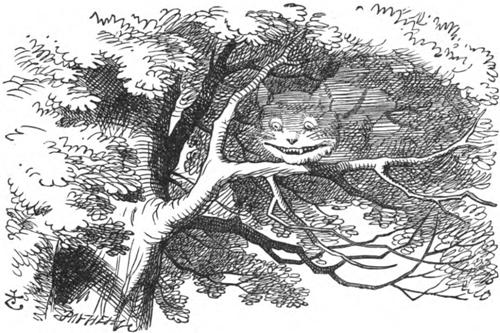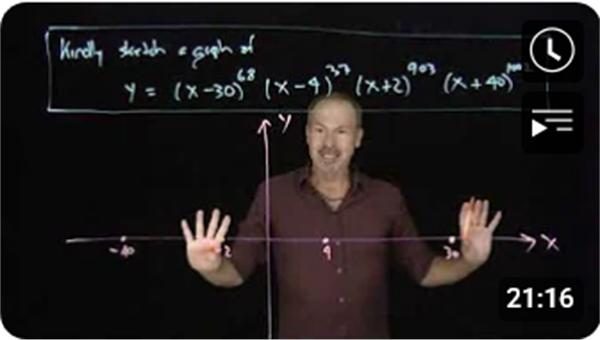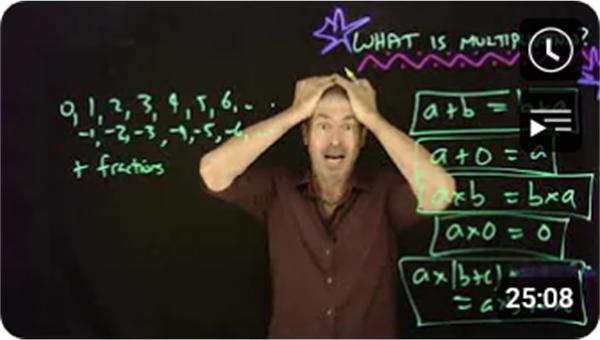 I have been meaning to focus on this aspect of mathematics for some time. It is a topic I elaborated in my “Angular Momentum” post. But I also think it has something to do with the difficulties that normal folks have with elementary math, in particular, numbers. I thought I would dub it the Cheshire Cat Paradigm, involving the Cheshire Cat’s grin.
I have been meaning to focus on this aspect of mathematics for some time. It is a topic I elaborated in my “Angular Momentum” post. But I also think it has something to do with the difficulties that normal folks have with elementary math, in particular, numbers. I thought I would dub it the Cheshire Cat Paradigm, involving the Cheshire Cat’s grin.
See the Cheshire Cat Paradigm.
(Updates 6/7/2025, 7/19/2025, 7/20/2025) Contra Concrete Algebra, James Tanton Videos, Imaginary Numbers
(Update 6/7/2025) Contra Concrete Algebra
A recent posting has prompted me to address yet again my concerns about tying the learning of algebra so tightly to concrete objects and manipulations.
(Update 7/19/2025) James Tanton Videos
I was reviewing some old James Tanton videos and realized they were pertinent to the Cheshire Cat posting and the transition from concrete to abstract in mathematics. (Tanton speaks quite rapidly, at least to these old ears, so you may want to pause and rewind a few times.)
 Three Oft-Overlooked Principles of Curriculum Design 25 July 2024 (https://www.youtube.com/watch?v=kvChP8fc-x0)
Three Oft-Overlooked Principles of Curriculum Design 25 July 2024 (https://www.youtube.com/watch?v=kvChP8fc-x0)
The first principle focuses on how concrete models yield mathematical principles, which then transcend their origins in the concrete. His third principle is illustrated by a concrete example that I consider an interesting historical story, but should not be construed as an appropriate modern math technique as I explained in the Contra Concrete Algebra article.
 What is Multiplication? 6 September 2020 (https://www.youtube.com/watch?v=FnqrpKiCNuE)
What is Multiplication? 6 September 2020 (https://www.youtube.com/watch?v=FnqrpKiCNuE)
Tanton addresses the controversy over the meaning of multiplication and shows it is a prime example of the evolution of abstract math from the concrete. He essentially provides a more detailed discussion of the evolution of numbers from counting numbers than I gave in the post.
(Update 7/20/2025) Imaginary Numbers
David Bressoud’s column this month provides a detailed example of how the manipulation of “imaginary” numbers according to the counting-number rules allowed mathematicians to solve algebraic equations. And so they became grudgingly accepted over time as legitimate numbers—meaning they followed the rules of arithmetic—even though they didn’t count anything.
